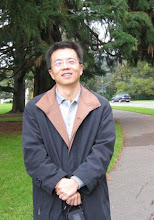WYSIWYG programming is a popular term used in PC software world, such as web design or PC object oriented programming. I am a big fan of tool aided code generation for embedded world, more specifically, use actor incarnation and Finite-State Diagram as the example below.
BTW: Please note Object Oriented style of programming does NOT mean Object Oriented Language. I could not find a suitable term for it, so I call it “WYSIWYG Embedded Programming”.
An example of Actor diagram (instance of Object).
Protocol (structure definition) and FSM (dynamic behavior) example.
The question here is about reliability. You are comfortable to browse a web page generated through WYSWYG. If you are driving a car with auto collision-avoidance controlled by auto-generated code, do you trust the firmware or the human?
My answer is WYSIWYG tool is more trust worthy. Same as in PC world, our embedded team is usually composed of Engineers from all levels and various backgrounds. The great advantage of WYSIWYG is that WYSIWYG allows the user to visualize the target break down static and dynamic behavior, and even step/debug graphically. It not only helps the developers to gain better understanding of the architect, but also enables the team members to collaborate more efficiently based on their better understanding. Especially if there are many new team members.
With the structure breakdown, it is easier for developers to design the code to cover more comprehensive cases, and find out more corner cases for testing. There are cases that non-scalable architecture eventually makes the project next to impossible to have one human to oversee all logical paths, and costs enormous amount of effort to do repeat but not efficient testing.
WYSIWYG may have impact on Performance and code footprint overhead. This is another solvable issue. There are various efforts in industry tackling this, which worth to discuss separately. In fact, my experience shows human factor may pose more overhead.

![clip_image002[7] clip_image002[7]](https://dm6uga.bay.livefilestore.com/y1moBmqeH9k7PYnlc-SAsCP02fIYnP-QKsNH6ydw8VDPHsX5NZ9NJ2rdvpjWJN6jjoZ0EOCULU1JAqpRq6aevN4UKXRIGpED2WywpCxBLG8ooL0tLL6g1KRZRyYosEtbswJVqo5JOE4KsaBRIf_VWBIFw/clip_image0027_thumb2.gif)

No comments:
Post a Comment